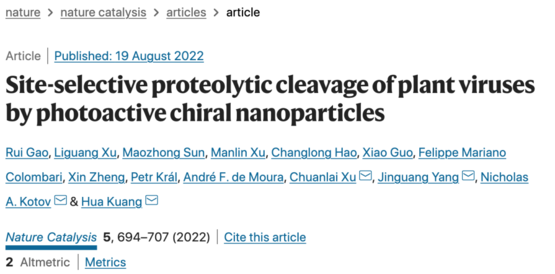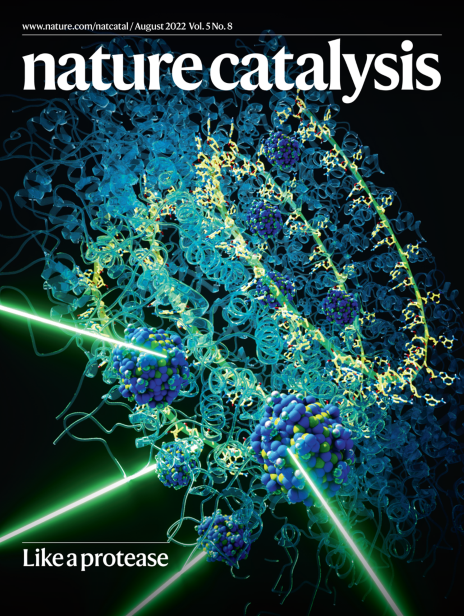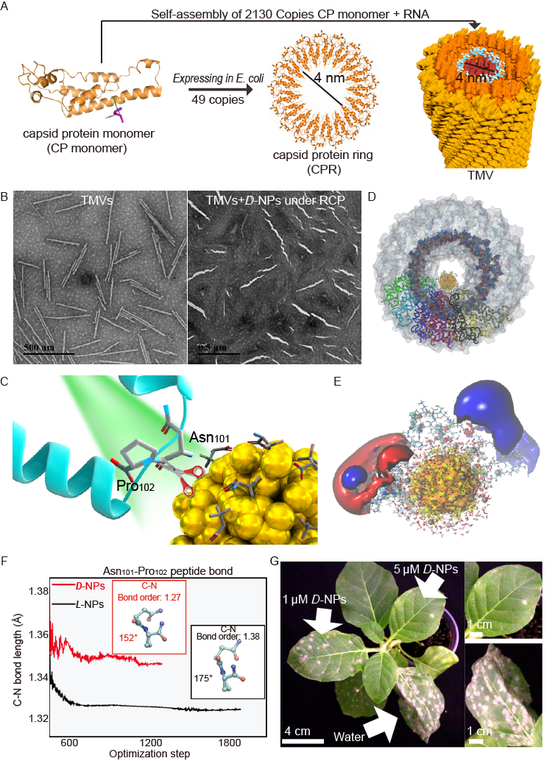The occurrence of plant diseases and insect pests is a natural phenomenon and cannot be avoided. In modern agricultural production, my country uses less than 7% of the world’s arable land to feed 22% of the world’s population. Among them, pesticides are an important means and tool to protect crops, prevent major biological disasters, and reduce yield losses.
However, traditional pesticides are used inefficiently for a long time, and the utilization rate is less than 40%. A large amount of pesticides are discharged into the environment or remain in food, which seriously restricts the sustainable development of agriculture. It not only poses a serious threat to biological and human health, but also leads to ecological system damage. damage to the structure and function.
On August 20, 2022, Xu Chuan’s research team from Jiangnan University, in cooperation with the Tobacco Research Institute of the Chinese Academy of Agricultural Sciences, the University of Michigan, etc., published a cover article in the journal Nature Catalysis , entitled “Photoactive chiral nanoparticles target plant virus sites.” Selected protease cleavage”. They developed a unique way to develop chiral nanoparticles with unique morphology, using minerals required for plant growth as raw materials, and to develop new nano-pesticides that do not have residues and do not cause drug resistance .

Screenshot of the paper
Plant virus infection can cause at least 20 billion yuan of economic losses worldwide every year, the most representative of which is tobacco mosaic virus. It is the first plant virus discovered by humans, and it has been found that it can infect more than 500 plants. The coat protein helix of tobacco mosaic virus self-assembles into a rod-like appearance. The pore size formed by the helix is about 4 nm, and the single-stranded genomic RNA is located in it. Based on this structural feature of the virus, the team prepared a copper sulfide chiral nanometer with a scale of 3 nm. The nanoparticles can enter plant cells through the stomata of plant leaves, target plant viruses, and kill plant viruses by photo-shearing under sunlight.
Professor Xu Chuan’s team, together with the research team of Yang Jinguang from the Tobacco Research Institute of the Chinese Academy of Agricultural Sciences, and the associate researcher Xu Manlin from the Shandong Peanut Research Institute, carried out the real virus infection and transmission blocking experiment of tobacco plants, and confirmed that it is only necessary to spray 5 mL per plant on average. The new chiral nano-pesticide (concentration of 5µM) can obtain good plant protection effect; one spray can remove 95% of the virus within 3 days, inhibit the infection and spread of tobacco mosaic virus, and the efficiency is significantly higher than all current plants Antiviral chemical pesticides; after the monitoring of copper, sulfur and other elements in soil and plants, this new type of pesticide does not produce residues, does not destroy the acid-base balance of the soil, and is an efficient, safe, resource-saving and environmentally friendly agricultural input. It will inject a strong driving force for agricultural transformation and upgrading.
The research results also revealed the photo-shearing chemical mechanism of new pesticides . The chiral nanopesticide, because the particle size and morphology match the central pore size formed by the viral capsid protein, can be stabilized inside the pore by means of the supramolecular interaction network with the polypeptide fragments in the capsid pore; The specific protein site-specific affinity in the pore hydrolyzes the amide bond between the 101st asparagine and the 102nd proline of the capsid protein monomer, destroys the viral protein capsid, and effectively kills the virus.

thesis cover
This work was supported by Prof. Andre F. de Moura of the Federal University of San Carlos, Brazil, Prof. Felippe M. Colombari of the National Laboratory for Nanotechnology, Brazil, Prof. Petr Král of the Department of Chemistry, University of Illinois at Chicago, and Prof. Nicholas A. Kotov of the University of Michigan, USA. Great help in theoretical dynamics simulation and calculation; tobacco antiviral research was completed by the research team of Yang Jinguang from the Tobacco Research Institute of the Chinese Academy of Agricultural Sciences and the associate researcher Xu Manlin of the Shandong Peanut Research Institute.
The research was supported by the National Key R&D Program (2021YFA1200300) and the National Natural Science Foundation of China (32071400, 21925402, 21977038).

Mechanism of novel chiral pesticides to kill tobacco mosaic virus
references
[1] Gao, R., Xu, L., Sun, M. et al. Site-selective proteolytic cleavage of plant viruses by photoactive chiral nanoparticles. Nat Catal 5, 694–707 (2022). https://ift. tt/zkImURK
Author: Professor Xu Chuan’s team
Edit: Bamboo
Typesetting: Yin Ningliu
Source of the title map: Reference [1]
research team
(Co-) Corresponding authors Prof. Xu Chuan and Prof. Kuang Hua from Jiangnan University, Prof. Yang Jinguang from Institute of Tobacco Research, Chinese Academy of Agricultural Sciences, Prof. Nicholas A. Kotov from University of Michigan, USA
(Co-) The first author is Gurry, a postdoctoral fellow at the School of Food Science of Jiangnan University, young teachers Professor Xu Liguang and Professor Sun Maozhong, and Xu Manlin, an associate researcher at Shandong Peanut Research Institute
Paper information
Published the journal Nature Catalysis
Posted on August 20, 2022
Paper titleSite-Selective Proteolytic Cleavage of Plant Viruses by Photoactive Chiral Nanoparticles
(DOI: https://ift.tt/NnluwhS)
The Future Light Cone Accelerator is an early-stage technology entrepreneurship accelerator initiated by Nutshell Technology. It provides proposals for scientists in different stages of entrepreneurship, ranging from company registration, intellectual property rights, to financing needs, and team formation. Accelerate the transformation of scientific and technological achievements from the laboratory to the market, and accelerate the iteration of some scientists to become CEOs.
The Nutshell team has 12 years of experience in serving scientists. We always make suggestions from the perspective of scientists and be good friends of science and technology creators. If you are planning to start a technology business, whether you are looking for money, people, resources, or orders, you are welcome to chat with the Future Light Cone team. You can send bp or other project information to [email protected] , and leave your contact information, or add the Wechat of Guoke Hard Technology Enterprise to communicate by private message.

✦
✦
Click to read the original text to view the original paper
This article is reproduced from: http://www.guokr.com/article/462113/
This site is for inclusion only, and the copyright belongs to the original author.